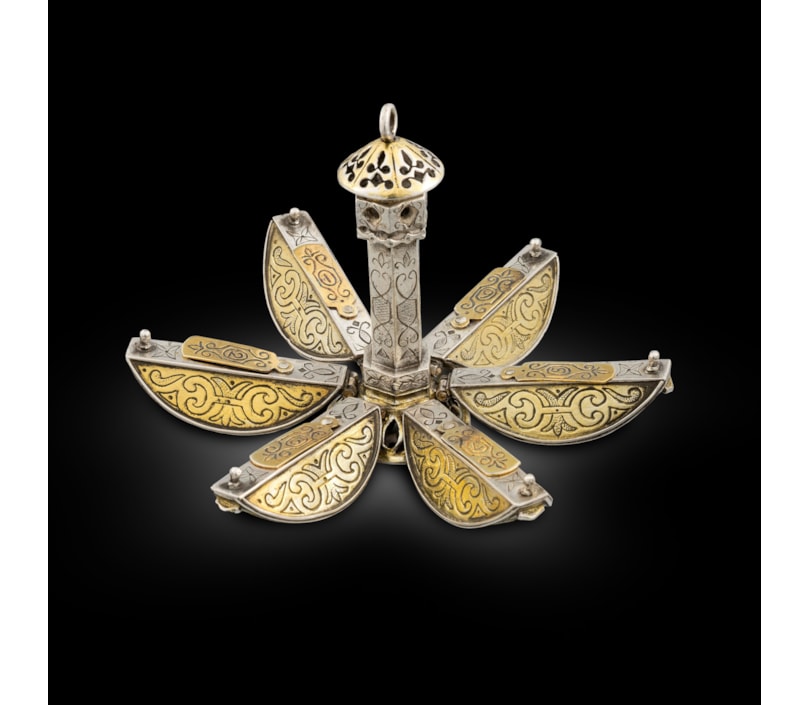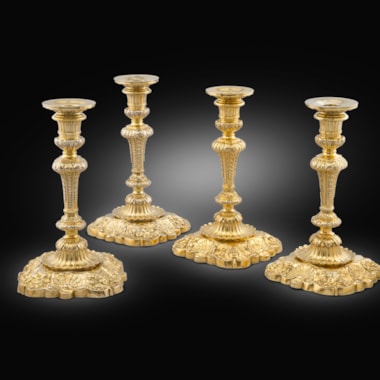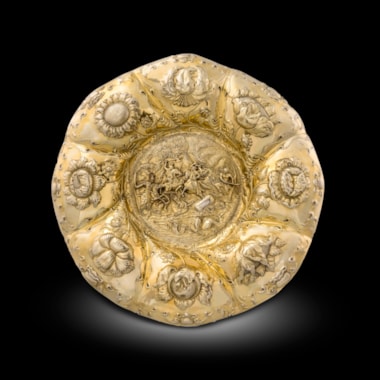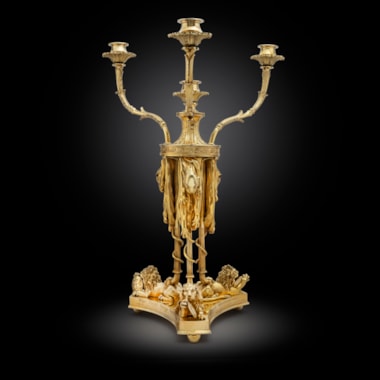Of lobe form with parcel-gilt ornate scrolling decoration and pierced foliate ornament on the top and base, opening to reveal silver and silver-gilt scent compartments, each with sliding covers engraved with a number from one to six. The top is finished with a screw-in suspension loop.
The pomander was first conceived in medieval times as a mixture of scented spices and perfumed made into a ball, the form of perforated receptacle was a later development of the fourteenth to seventeenth centuries. It would contain aromatic substances, often scents infused in wax. The term pomander first arose during the Middle Ages from the French pomme d’ambre and referred to an aromatic ball made of ambergris, civet, musk, dried flowers, spices and scented oils. It was thought that inhaling specific aromas or simply carrying them on your person, would cure or prevent serious illness.
You May Also Like








































































